
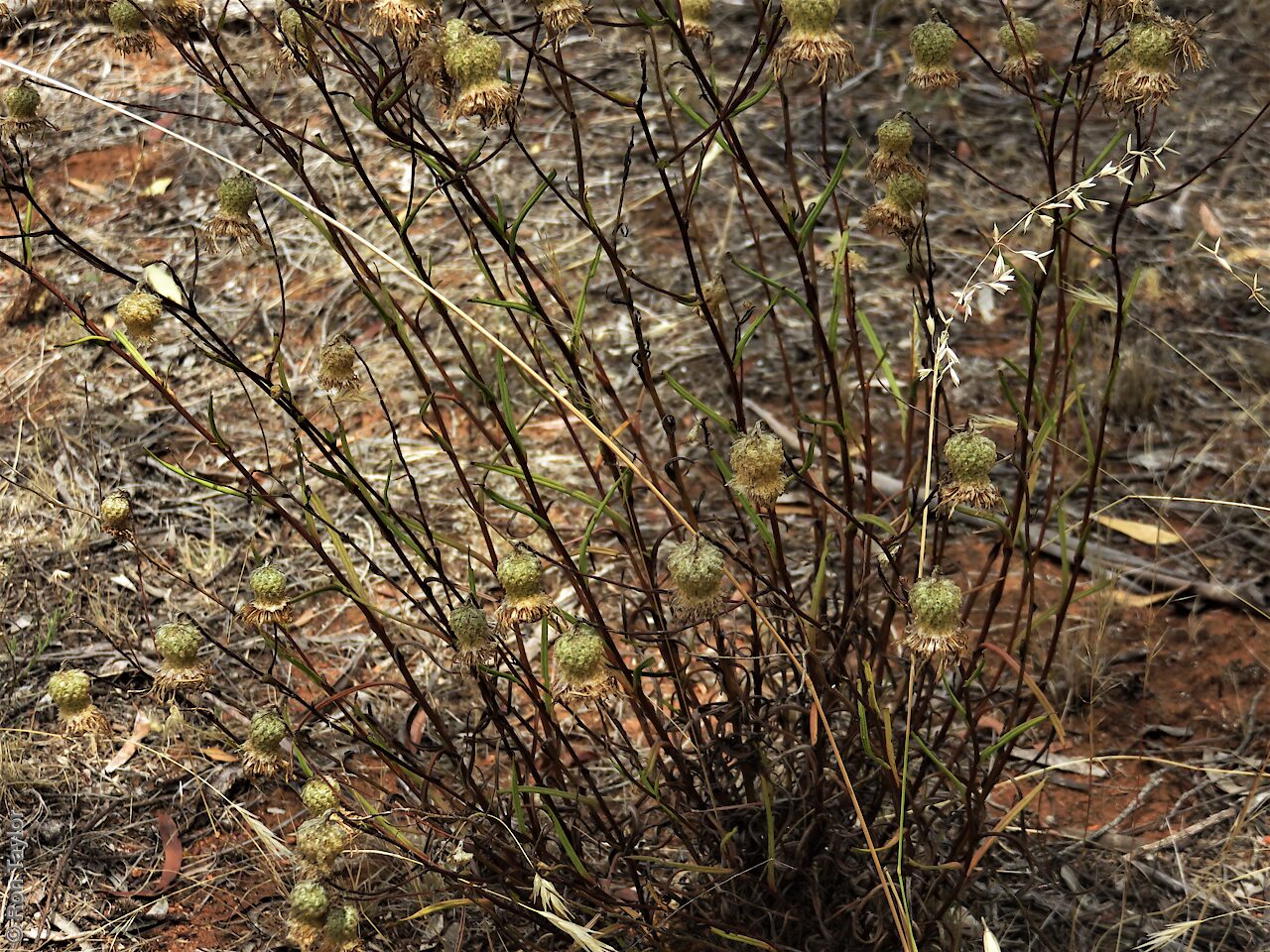







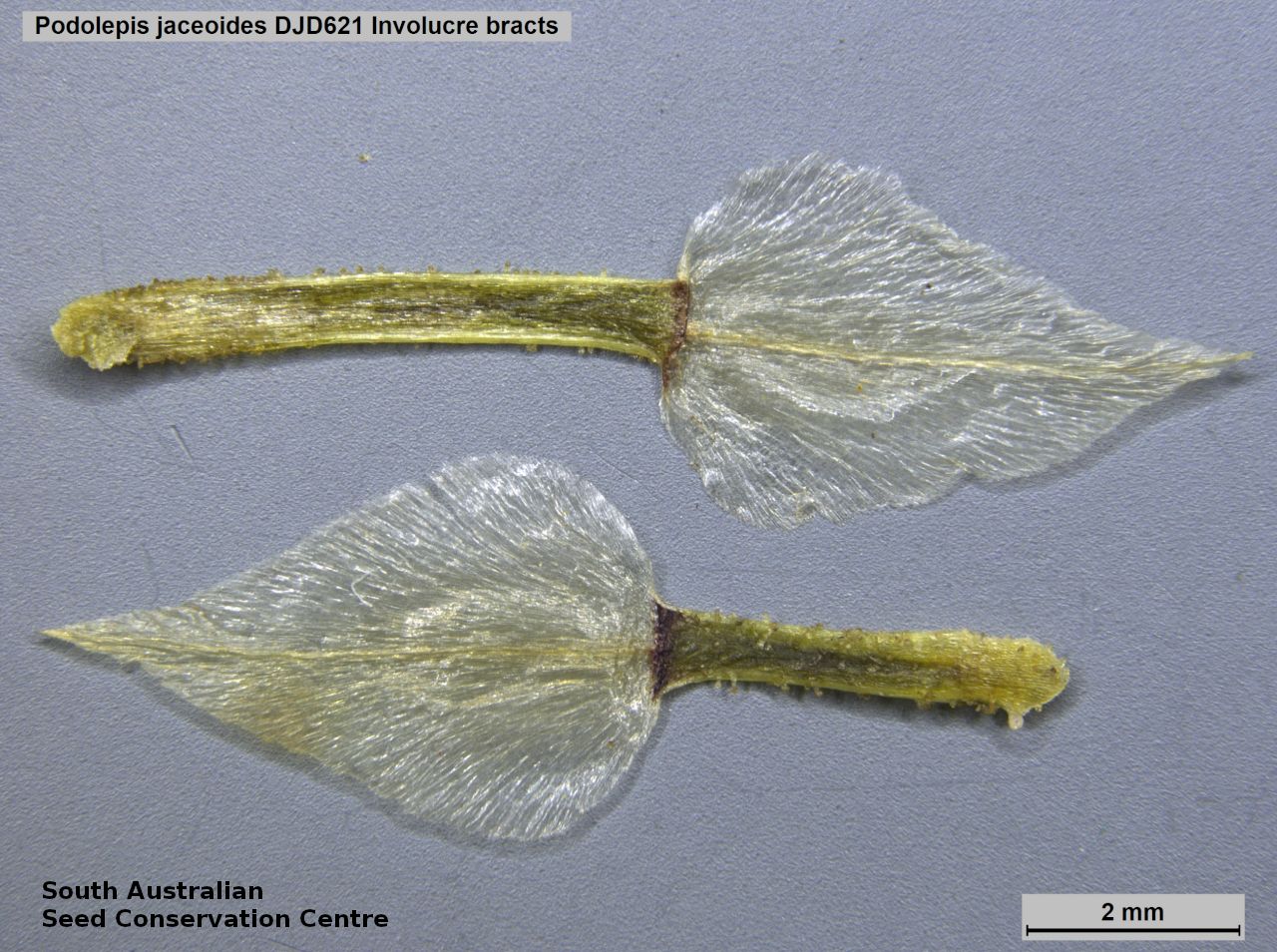
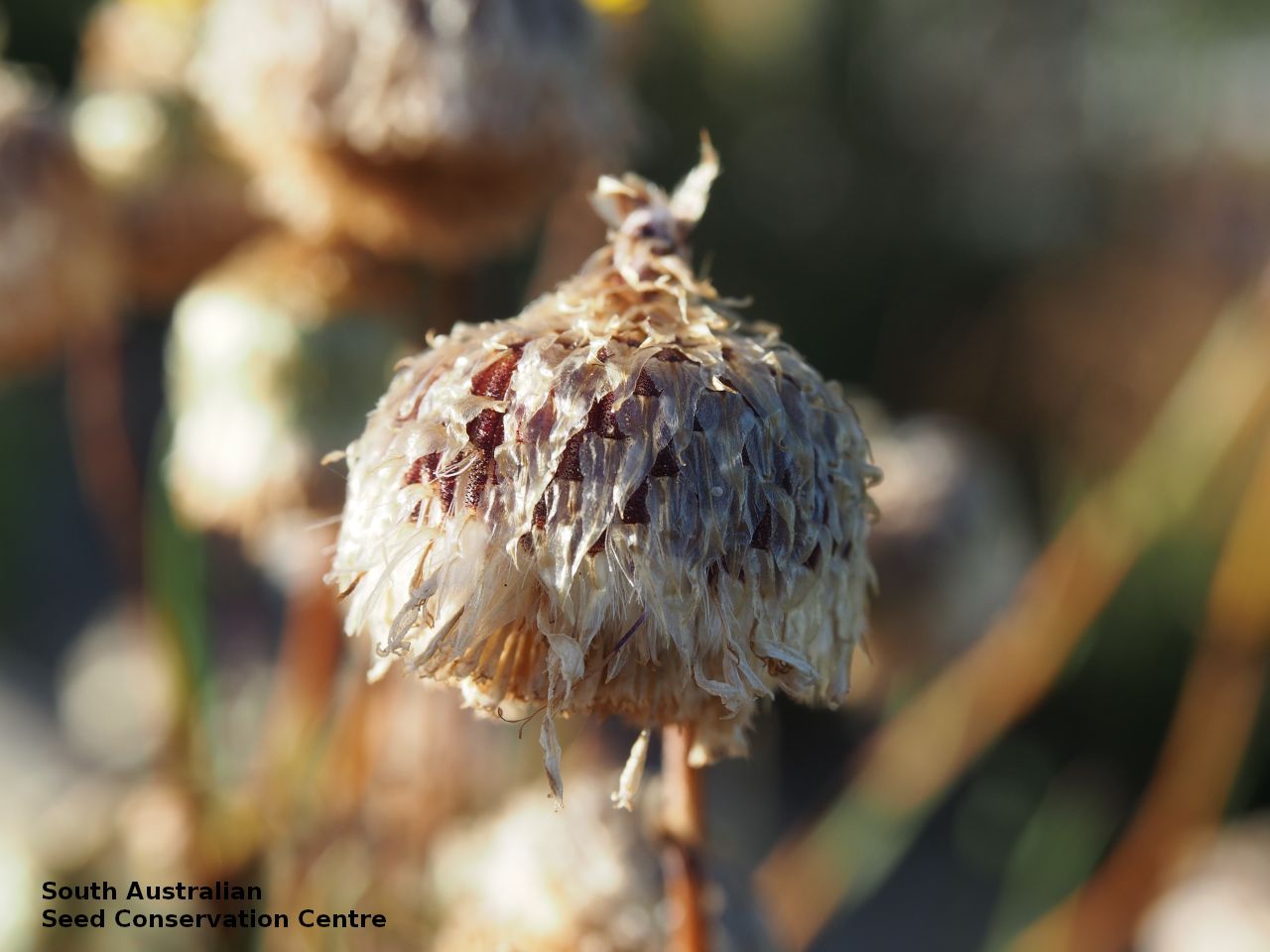










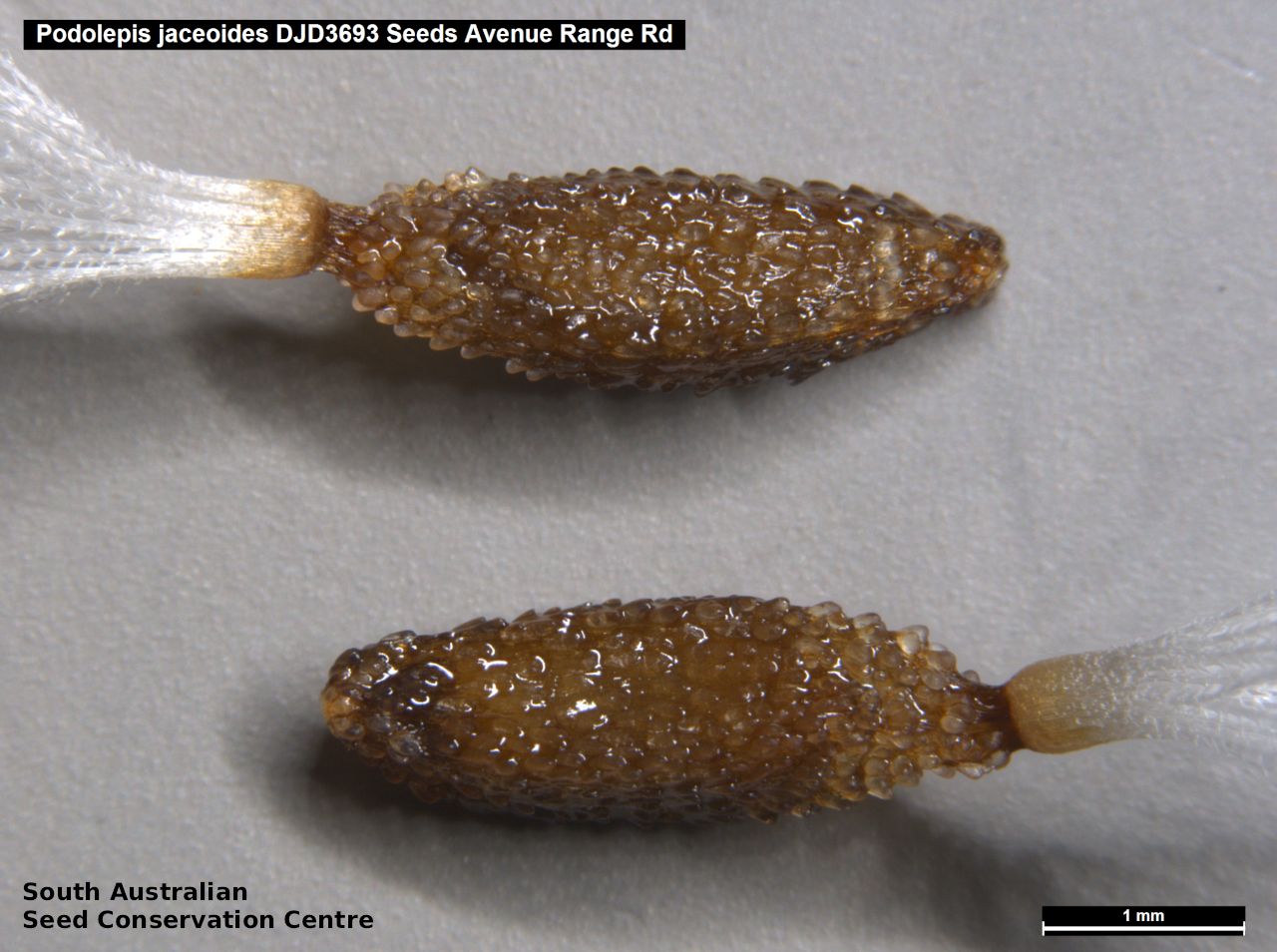

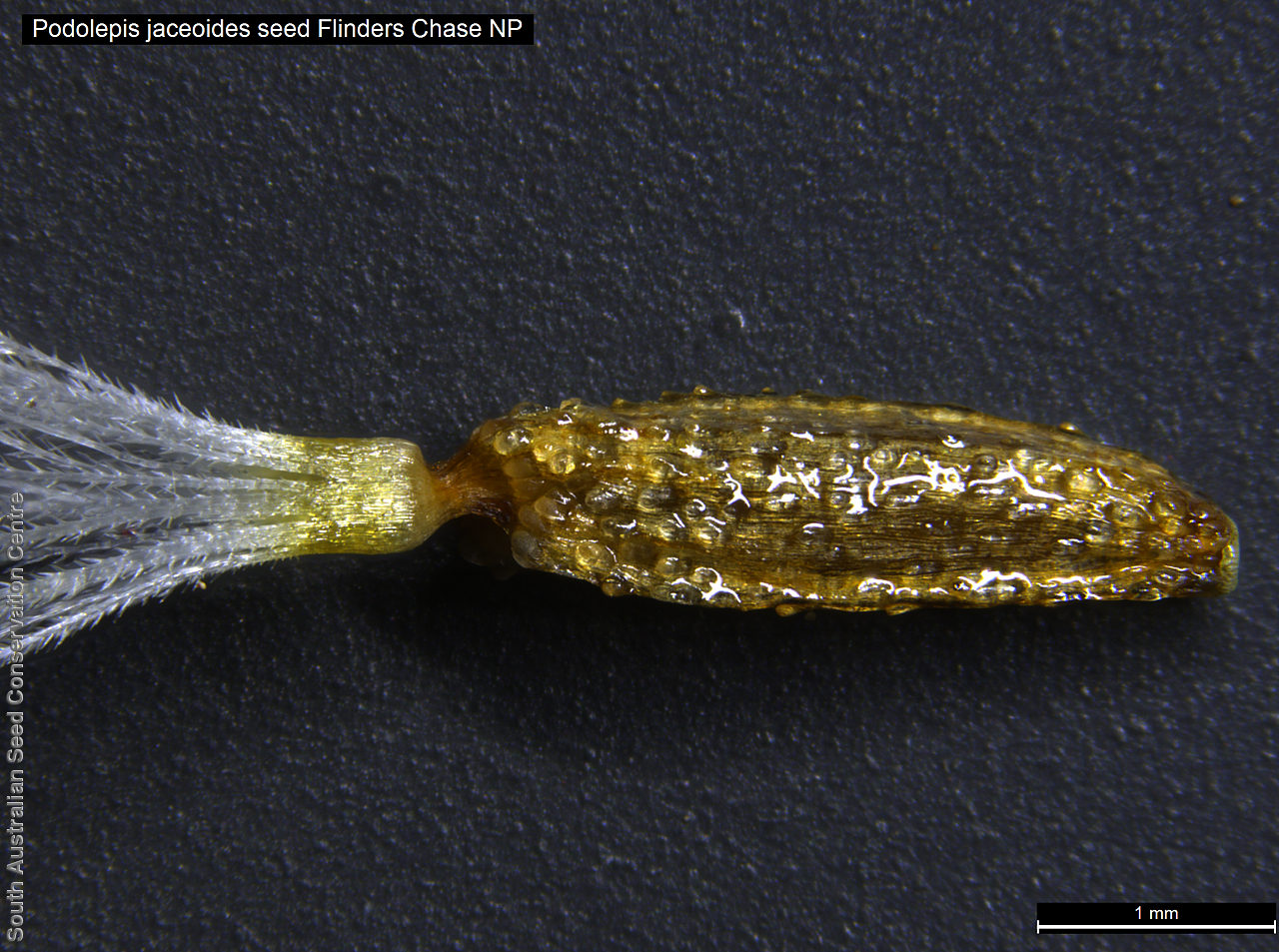


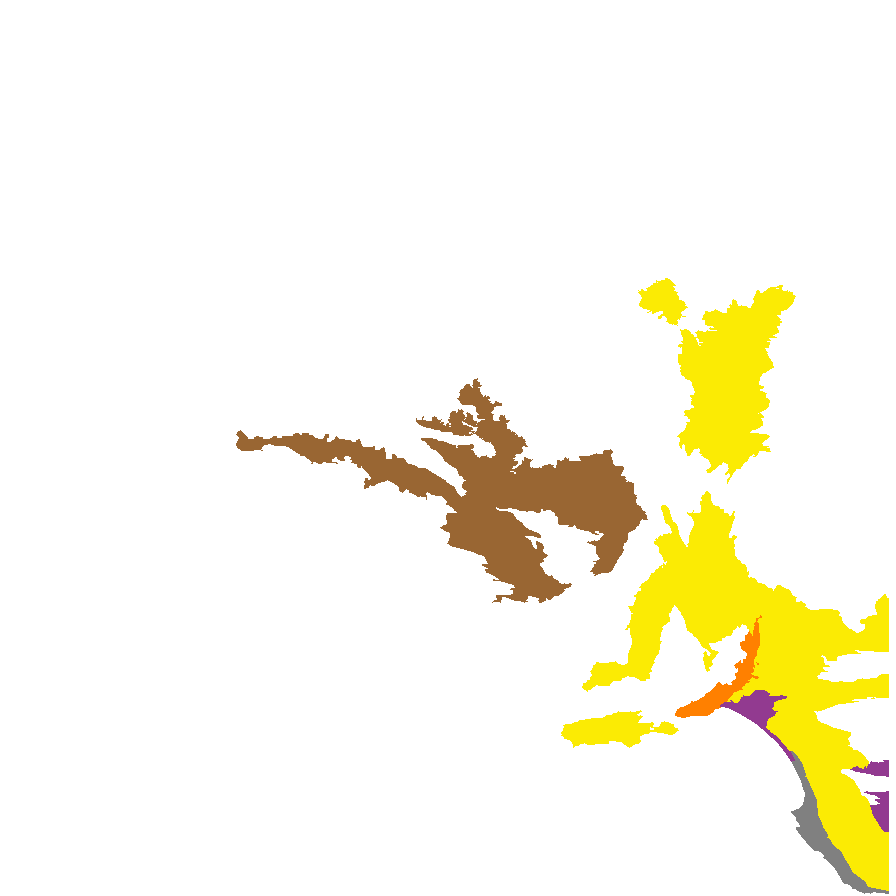
Botanical art
Prior names
Scalia jaceoides
Podolepis acuminata, nom. illeg.
Common names
Showy Podolepis
Showy Copper-wire Daisy
Etymology
Podolepis from the Greek 'podos' meaning foot and 'lepis' meaning a scale, referring to the stalked involucral bracts. Jaceoides refer to its similarity to jacea, a Spanish name for knapweed.
Distribution and status
Found scattered across the southern part of South Australia, growing in a range of habitat. Also found in Queensland, New South Wales, Victoria and Tasmania. Native. Rare in South Australia. Rare in Victoria and Tasmania. Common in the other States.
Herbarium regions: Eyre Peninsula, Northern Lofty, Murray, Yorke Peninsula, Southern Lofty, Kangaroo Island, South Eastern, Green Adelaide
NRM regions: Adelaide and Mount Lofty Ranges, Eyre Peninsula, Kangaroo Island, Northern and Yorke, South Australian Arid Lands, South Australian Murray-Darling Basin, South East
AVH map: SA distribution map (external link)
Plant description
Erect herb to 50 cm high, growing annually from a thickened persistent rootstock, with woolly or cobwebbed stems. Leaves scabrous to glabrescent, margins flat to revolute with basal leaves lanceolate to oblanceolate, to 20 cm long, and 20 mm wide and cauline leaves linear to linear-lanceolate, to 20 cm long and 15 mm wide, stem-clasping. Inflorescence large yellow hemispherical daisy head to 40 mm across at terminal of a long coppery stem. Involucral bracts with linear, glandular claws; lamina more or less ovate, scarious, virtually flat, smooth, shiny, apex acute to acuminate; intermediate bracts to 18 mm long, with claws shorter than the lamina; inner bracts long-clawed. Flowering between August and November. Fruits are white fluffy daisy-head. Seeds are cream to brown ovoid to oblong seed to 3 mm long and 1.5 mm wide, covered in small tubercules, with long feather-like pappus at one end. Seed embryo type is spatulate fully developed.
Seed collection and propagation
Collect seeds between October and January. Collect heads that are fluffy. Either pick off the whole heads or use your finger and pull off the seeds from the head. Mature seeds will come off easily. Place the heads in a tray for a week to dry. No cleaning is required if only pure seeds are collected. If heads are collected, then rub the heads gently with your hands to dislodge the seeds. Viable seeds will be fat and hard. Use a sieve to separate the unwanted material. Store the seeds with a desiccant such as dried silica beads or dry rice, in an air tight container in a cool and dry place. Seed viability is high for this species but can have high seed predation. Seeds are non-dormant, viable seed should germinate readily.
Fire response
Obligate re-spouter and re-seeder.
Longevity: ?? years
Time to flowering: ?? years
Recovery work
In 2020-2021 this species was assessed post-fire in 1 year and 2 year old fire scars. A total of169,800 seeds have been collected & banked for 2 populations inside the 2020 fire scar. Germination screening testing the response to fire cues will be undertaken in 2021.This project was supported by the World Wildlife Fund program.
| Location | No. of seeds (weight grams) | Number of plants | Date collected | Collection number Collection location | Date stored | % Viability | Storage temperature |
|---|---|---|---|---|---|---|---|
| Andy Young | |||||||
| BGA MSB | 15,700 (7.5 g) 15,700 (7.5 g) | 50+ | 16-Dec-2003 | PJA65 Yorke Peninsula | 23-Mar-2006 | N/C | +5°C, -18°C |
| BGA | 21,000 (32.19 g) | 17-Oct-2006 | DJD599 Yorke Peninsula | 1-Aug-2007 | 50% | +5°C, -18°C | |
| BGA | 10,300 (24.85 g) | 50+ | 9-Dec-2011 | KHB650 Flinders Ranges | 1-Nov-2012 | 58% | -18°C |
| BGA | 38,000 (53.35 g) | 50+ | 9-Dec-2011 | KHB650 Flinders Ranges | 1-Jan-2016 | 40% | -18°C |
| BGA | 26,300 (38.17 g) | 100+ | 12-Dec-2017 | DJD3682 South Eastern | 30-Jun-2018 | 60% | -18°C, -80°C |
| BGA | 86,300 (137.110 g) | 100+ | 11-Dec-2020 | DJD3961 Kangaroo Island | 28-Jun-2021 | 65% | -18°C, -80°C |
| BGA | 4,100 (6.88 g) | 15 | 14-Nov-2018 | DJD3815 Northern Lofty | 7-Jul-2022 | 65% | -18°C |
| BGA | 10,100 (22.540 g) | 30+ | 20-Dec-2021 | TST1489 Northern Lofty | 20-Jun-2023 | 100% | -18°C, -80°C |
| BGA | 12,200 (39.410 g) | 30+ | 20-Dec-2021 | TST1489 Northern Lofty | 20-Jun-2023 | 55% | -18°C, -80°C |
Number of plants: This is the number of plants from which the seeds were collected.
Collection location: The Herbarium of South Australia's region name.
% Viability: Percentage of filled healthy seeds determined by a cut test or x-ray.